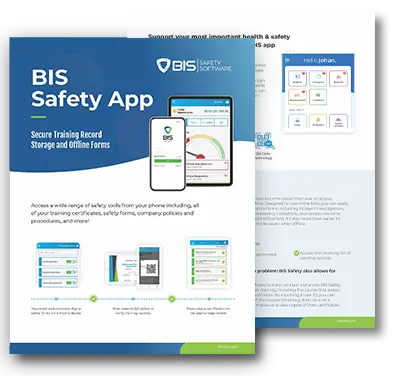
Online Training Software vs. In-Person Training
The Internet has existed for almost 40 years, but it only started having more business applications in the last two decades, thanks to broadband connectivity. Companies can now use online training software that has tools for videoconferencing and file sharing, instead of gathering their staff in a classroom to take courses. However, online training has advantages and limitations like any technology, and companies must be aware of both to achieve the best results.
Efficiency is one of the main benefits of online training as participants save time and travel expenses by not going to a classroom. They can connect to the platform in seconds regardless of distance. Companies save money on various expenses such as travel, food, accommodation, etc.
Other than efficiency, online training offers customization. Courses can be programmed for each job position, based on the skills and previous results of each participant. Content is often available in multiple formats, adapting to different learning styles.
The main limitation of online training software is the dependency on a fast internet connection, which may be a problem for companies that operate on remote sites. There are also skills that cannot be learned on a screen, regardless of how much you study – like the practical side of operating a crane for example.
Here are the pros and cons of online training software;
Advantages of Online Training
1) Flexibility
Classroom training has many limitations: you need to find a suitable schedule for all participants, and they must all stop working at once to take the course. A small company with a single office and just a few employees may be able to manage this. However, gathering all participants in a classroom is very expensive and disruptive for a large corporation with many employees in different timezones.
These logistical challenges disappear with online training software, since each participant can choose when to take the course, and from where. Employees can focus on learning by choosing a schedule where there are no other tasks demanding their attention.
2) Information Retention
With classroom training, participants are forced to meet a schedule that may not be optimal for learning, even if they have time available. For example, if a course for equipment operators is scheduled on Friday afternoon after a busy week, fatigue may interfere with concentration. An online course, however, lets participants choose a time when they have rested well.
Online training software offers compatibility with many types of content, ranging from text documents to demonstration videos. This has two main advantages: participants can focus on the content that meets their learning style, and they can repeat topics if necessary without delaying anyone. This is not possible in a classroom, where the same material is presented to everyone at the same pace.
3) Learners Control the Pace
Classroom courses are often delayed when employees have different workloads. There may be a day in which some participants have many hours available, while others have a saturated agenda. With online training software, learners can control their pace individually, while completing courses faster as a group.

Another advantage of training software is adapting to individual skills: you can finish topics faster if they are easy for you, while dedicating more time to those you consider difficult. This learning approach is simply not possible in a classroom, where the time available for each topic is limited. What is intuitive for one participant may be challenging for somebody else, and vice-versa.
4) Less Expensive
Online training offers many savings, starting with the time and travel expenses that would be needed for classroom training. In cases where instructors live somewhere else, their travel expenses are also saved. Companies without a suitable space for training also save the cost of renting a classroom. The indirect savings when companies use online training software include time wasted commuting and the avoidance of pausing work operations while employees are occupied with training.
5) Up to Date Reporting & Analytics
Online training software not only delivers course material – it can also gather data such as completed courses and test results from each participant. This information can be used to generate automatic reports, which gives management a clear picture of where their team stands in terms of skills and training.
Training software is able to track certificate expiration dates, and can reveal areas of opportunity – not only for individual employees, but for the company as a whole. This information can be used to plan training more effectively.
6) Mobility
Online courses can be accessed from any device, which means that participants don’t depend on a specific workstation to complete them. Training can be completed on the same laptops, tablets and smartphones that are used for everyday work.
Disadvantages
1) Technology Issues
While online training software offers many advantages, it depends on having a fast and stable Internet connection. While this is not a problem in most cities and towns, companies in sectors like mining and energy often require their employees to work in remote sites. If a new course is required due to a change in industry regulations, employees with limited connectivity may have trouble accessing the content. Hardware malfunctions and system errors are not common issues if you have reliable IT services. However, they can limit access to important software and files when they happen.
2) Inability to Focus
Due to individual preferences and learning styles, online courses may not be the best option for everyone. There may be employees who learn better with personal interaction in a classroom, where topics can be discussed as a group. While this can be achieved with videoconferencing and screen sharing, some employees may have better retention with the actual classroom experience.
3) More Distractions

The flexibility of online training software is an advantage when participants choose the best time to learn, but this feature must be used responsibly. Participants may try to multitask while taking an online course, which divides their attention. In some cases, they may simply click through content without learning it.
Unless a company uses virtual proctoring, online training software gives little or no control over the learning environment, especially when participants are taking tests.
4) Scope Limitations
Some skills require hands-on training, and they simply cannot be learned through a virtual platform. For example, no matter how much you have read about forklifts, you must gain driving experience before working as an operator.
There are also cases in which equipment and tools cannot be removed from the point of use, and the training must be completed on-site. For example, welding technicians must practice with actual materials and equipment before they can start working.
Conclusion
Companies can use online training software to manage the learning experience more efficiently, saving time and money while removing unnecessary steps. There is no need to spend on travel and lodging, participants can set their own space, and course content can be delivered in many formats regardless of the device used.
However, all technologies have advantages and limitations, and online training software is not exempt from this. The learning process depends on Internet connectivity, which can be an issue for workers in remote sites. Companies also have less control over the learning environment, and remote proctoring may be necessary for courses that cover sensitive topics. Finally, there are skills that must be learned by doing, and they cannot be acquired with online courses alone. Online training software has allowed companies to increase their employees skill levels and keep them safe.




































